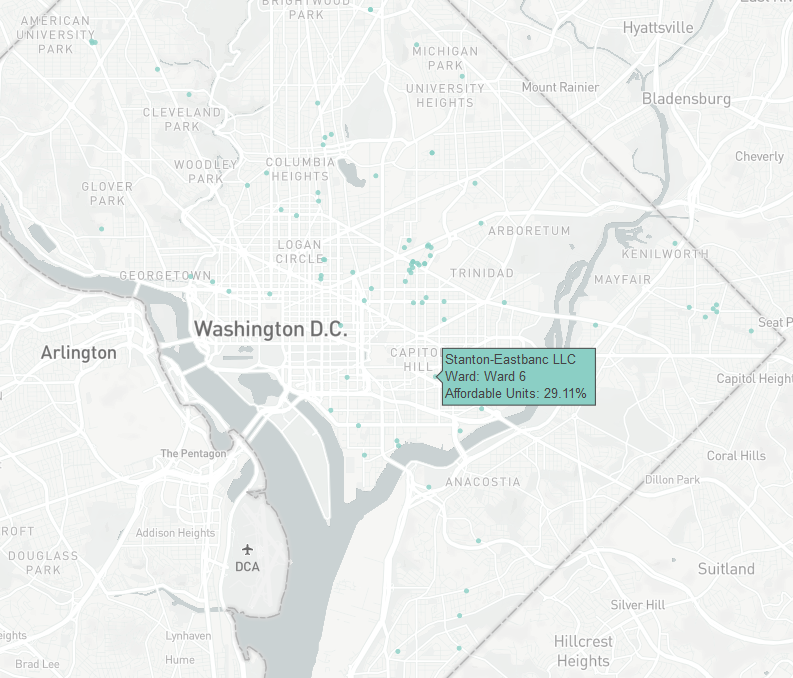

D.C.’s Planned Unit Development (PUD) process allows developers to gain additional height and density for a project (beyond what they could build matter of right) in exchange for delivering additional public benefits back to the community.
There have been hundreds of PUDs over the past two decades, but the data isn’t particularly well organized. It lives in a series of individual zoning orders and supporting documents — hundreds of PDFs buried within the zoning website. In 2019, contributor Nick Sementelli systematically combed through those documents to build a scannable, sortable database. This update to that database includes any that have been finalized since, as well as some that have expired.
What are Planned Unit Developments?
D.C.’s Planned Unit Development (PUD) process allows developers to gain additional height and density for a project (beyond what they could build matter of right) in exchange for delivering additional public benefits back to the community. The specific level and types of benefits are driven by a conversation with the community, generally through the relevant Advisory Neighborhood Commission (ANC) and local civic organizations. The idea is that the community can outline their priorities on how to best recapture some of the additional value the developer earns from the zoning flexibility.
There is no predetermined set of community benefits: each benefit package under each PUD is developed organically, following negotiations between the community (usually led by the ANC) and the developers. These negotiations have produced benefits in many forms, including green building design, extra space for public use, or improvements to streets and sidewalks. But the benefits that generally attract the most public attention are additional subsidized affordable housing and direct cash contributions to local community organizations.
What’s in the database?
In 2019, we went through hundreds of PDFs of zoning orders and supporting documents to build a scannable, sortable database of PUDs negotiated from 2010 to 2018. This update includes all PUD agreements finalized between then and May 2022, along with any changes to earlier zoning cases.
For each of the 92 PUD cases recorded, the database includes basic information such as the name, case number, and a link to the original PUD, along with information about housing units, share of units that are affordable (and at what levels), parking information, and the recorded costs of the community benefit agreement line items. The sheet also records basic categorical data like zones, maximum heights and floor-area-ratios (FAR), which make it easy to look up details of past projects or find examples to compare present-day proposals to. A map of the PUDs in the database is below.

